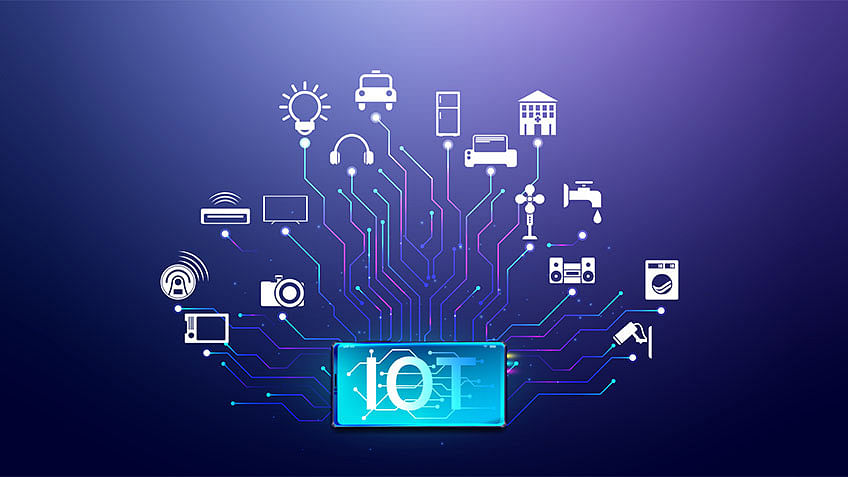In the world of IoT development, choosing the right programming language is crucial. Two popular options are C and Python. Both have their unique strengths and challenges, making the decision not straightforward. The debate of C vs Python for IoT development continues to intrigue developers worldwide. This article delves into both languages, exploring their suitability for IoT projects.

Understanding IoT Development
The Internet of Things (IoT) refers to the network of interconnected devices that communicate and exchange data. These devices range from smart home appliances to industrial sensors. The goal of IoT is to create smarter environments by facilitating seamless data flow.
Why Language Choice Matters in IoT
Choosing the right programming language impacts the efficiency, scalability, and performance of IoT applications. The language should align with the project’s hardware capabilities and data processing needs.
Overview of C Programming
C is a low-level programming language known for its performance and efficiency. It’s widely used in embedded systems, making it a popular choice for IoT development.
Advantages of C in IoT
One significant advantage of C is its ability to provide direct access to hardware, allowing precise control over resources. This makes it ideal for resource-constrained environments common in IoT devices.
Challenges of Using C
However, C can be complex and less intuitive, especially for beginners. Memory management and debugging can also be challenging, requiring a steep learning curve.
Overview of Python Programming
Python is a high-level, versatile language known for its simplicity and ease of use. It has gained popularity in various tech fields, including IoT development.
Advantages of Python in IoT
Python offers rapid development capabilities, making it suitable for prototyping and testing IoT applications. Its extensive libraries and community support simplify complex tasks.
Challenges of Using Python
While Python excels in simplicity, it may not match the performance efficiency of C. Its higher level of abstraction can result in slower execution speeds, posing challenges in resource-limited IoT environments.
Performance Comparison
When comparing the performance of C vs Python for IoT development, C generally offers faster execution times and lower memory usage. This is crucial for real-time applications where speed is essential.
Ease of Development
For ease of development, Python shines due to its readability and simplicity. It allows developers to write less code, reducing development time and errors.
Use Cases of C in IoT
C is often used in scenarios requiring high-performance and real-time processing, such as automotive systems and industrial automation.
Use Cases of Python in IoT
Python is suitable for applications involving data analysis, machine learning, and rapid prototyping. It’s commonly used in smart home devices and wearable technology.
Community and Support
Both C and Python have strong communities and extensive resources. However, Python’s community is particularly active in the IoT domain, providing numerous libraries and frameworks.
Integration with IoT Platforms
Integrating with IoT platforms is essential for seamless data exchange. Python offers better integration capabilities with cloud services and IoT platforms due to its versatility and library support.
Security Considerations
Security is a critical aspect of IoT development. C allows for more granular control over security features, while Python provides libraries to implement robust security measures.
Learning Curve
The learning curve varies significantly between C and Python. Python is beginner-friendly, making it accessible to newcomers in IoT development. In contrast, C requires a deeper understanding of programming concepts.
Cost of Development
Development costs can be influenced by language choice. Python’s ease of use can lead to reduced development time and costs. However, C‘s performance may justify higher initial investment in certain projects.
Future of C vs Python in IoT
The future of C vs Python for IoT development is promising for both languages. While C continues to dominate in performance-critical applications, Python is growing in popularity for its versatility and ease of use.
Making the Right Choice
Choosing between C and Python depends on project requirements, team expertise, and desired outcomes. For those seeking detailed control and performance, C is ideal. However, for rapid development and ease of integration, Python is a compelling choice.
For more insights on IoT development, consider exploring this comprehensive guide on IoT product development.
Conclusion
In the ongoing debate of C vs Python for IoT development, both languages offer unique advantages. Understanding their strengths and limitations allows developers to make informed decisions that align with their project goals.
For more information on IoT interoperability, check out this IoT interoperability guide. You might also find interest in environmental monitoring IoT devices or learn about version control for IoT firmware.

FAQs
Is C more suitable for IoT development than Python?
C is often more suitable for performance-critical IoT applications due to its efficiency and control over hardware resources.
Can Python be used for all IoT projects?
While Python is versatile and easy to use, it may not be suitable for resource-constrained IoT devices requiring high performance.
What factors should influence the choice between C and Python for IoT?
Factors include project requirements, team expertise, desired performance, and ease of development.


